Nissan Leaf VS Nissan Ariya – Specs, Efficiency & Price Comparison
Which model is the better choice – the Nissan Leaf or the Nissan Ariya? We compare performance (217 HP vs 435 HP), boot capacity (394 L vs 468 L), efficiency (16.70 kWh vs 17.70 kWh), and of course, the price (30800 £ vs 37300 £).
Find out now which car fits your needs better!
The Nissan Leaf (Hatchback) is powered by a Electric engine and comes with a Automatic transmission. In comparison, the Nissan Ariya (SUV) features a Electric engine and a Automatic gearbox.
When it comes to boot capacity, the Nissan Leaf offers 394 L, while the Nissan Ariya provides 468 L – depending on what matters most to you. If you’re looking for more power, you’ll need to decide whether the 217 HP of the Nissan Leaf or the 435 HP of the Nissan Ariya suits your needs better.
There are also differences in efficiency: 16.70 kWh vs 17.70 kWh. In terms of price, the Nissan Leaf starts at 30800 £, while the Nissan Ariya is available from 37300 £.
Compare all the key specs now and find out which model fits your lifestyle best!
Nissan Leaf
The Nissan Leaf stands out as a pioneering model in the realm of electric vehicles, known for its impressive blend of practicality and eco-friendliness. It offers a smooth and quiet driving experience, making it an ideal choice for city commuting and longer journeys alike. The interior design is both comfortable and intuitive, providing drivers with a sense of modernity and ease of use.
details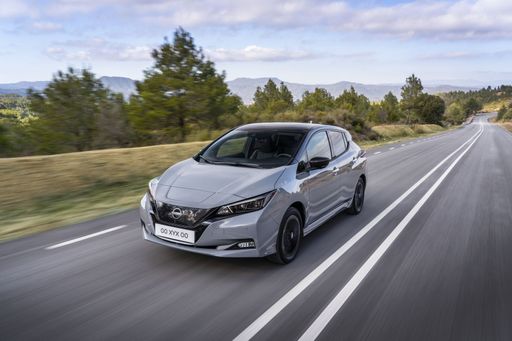 @ germany.nissannews.com
@ germany.nissannews.com
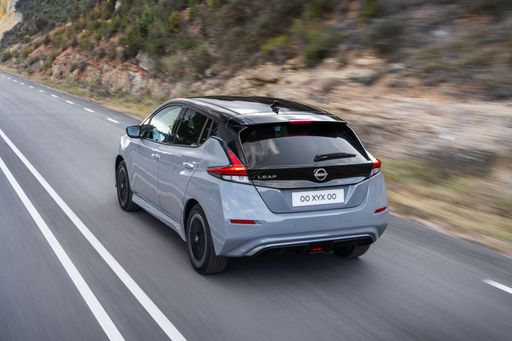 @ germany.nissannews.com
@ germany.nissannews.com
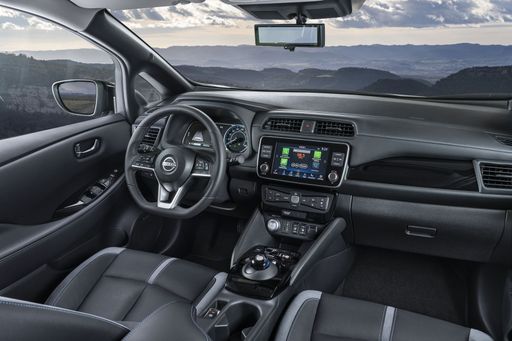 @ germany.nissannews.com
@ germany.nissannews.com
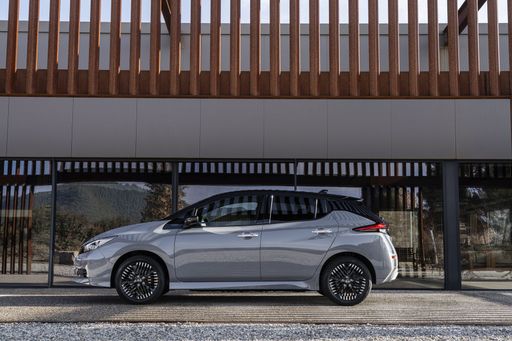 @ germany.nissannews.com
@ germany.nissannews.com
Nissan Ariya
The Nissan Ariya elevates the electric vehicle segment with its sleek design and advanced technology, providing a modern driving experience. Seamlessly blending comfort with performance, the Ariya offers an inviting and spacious interior that caters to both driver and passengers. Its innovative features make it a strong contender in the growing market for eco-friendly yet stylish automobiles.
details @ Nissan
@ Nissan
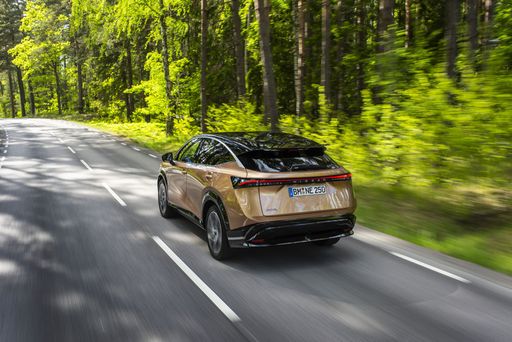 @ Nissan
@ Nissan
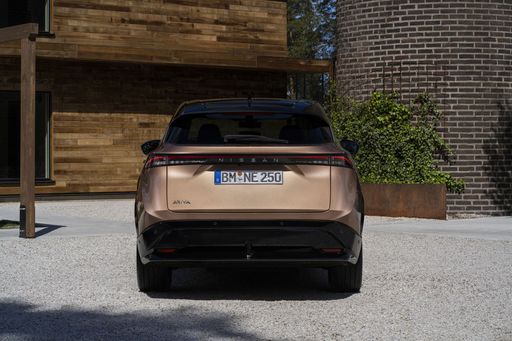 @ Nissan
@ Nissan
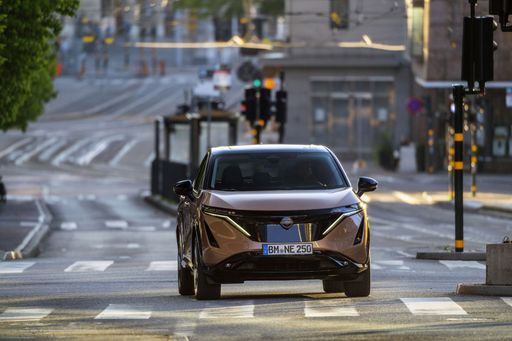 @ Nissan
@ Nissan
 @ Nissan
@ Nissan
 @ Nissan
@ Nissan
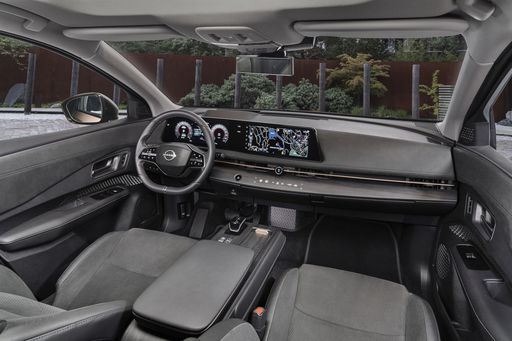 @ Nissan
@ Nissan

|

|
|
|
|
Costs and Consumption |
|
|---|---|
|
Price
30800 - 37200 £
|
Price
37300 - 54800 £
|
|
Consumption L/100km
-
|
Consumption L/100km
-
|
|
Consumption kWh/100km
16.7 - 17.8 kWh
|
Consumption kWh/100km
17.7 - 24.5 kWh
|
|
Electric Range
270 - 385 km
|
Electric Range
402 - 531 km
|
|
Battery Capacity
39 - 59 kWh
|
Battery Capacity
63 - 87 kWh
|
|
co2
0 g/km
|
co2
0 g/km
|
|
Fuel tank capacity
-
|
Fuel tank capacity
-
|
Dimensions and Body |
|
|---|---|
|
Body Type
Hatchback
|
Body Type
SUV
|
|
Seats
5
|
Seats
5
|
|
Doors
5
|
Doors
5
|
|
Curb weight
1580 - 1756 kg
|
Curb weight
1980 - 2259 kg
|
|
Trunk capacity
385 - 394 L
|
Trunk capacity
415 - 468 L
|
|
Length
4490 mm
|
Length
4595 mm
|
|
Width
1788 mm
|
Width
1850 mm
|
|
Height
1540 - 1545 mm
|
Height
1650 mm
|
|
Payload
384 - 415 kg
|
Payload
396 - 420 kg
|
Engine and Performance |
|
|---|---|
|
Engine Type
Electric
|
Engine Type
Electric
|
|
Transmission
Automatic
|
Transmission
Automatic
|
|
Transmission Detail
Reduction Gearbox
|
Transmission Detail
-
|
|
Drive Type
Front-Wheel Drive
|
Drive Type
Front-Wheel Drive, All-Wheel Drive
|
|
Power HP
150 - 217 HP
|
Power HP
218 - 435 HP
|
|
Acceleration 0-100km/h
6.9 - 7.9 s
|
Acceleration 0-100km/h
5 - 7.6 s
|
|
Max Speed
144 - 157 km/h
|
Max Speed
160 - 200 km/h
|
|
Torque
320 - 340 Nm
|
Torque
300 - 600 Nm
|
|
Number of Cylinders
-
|
Number of Cylinders
-
|
|
Power kW
110 - 160 kW
|
Power kW
160 - 320 kW
|
|
Engine capacity
-
|
Engine capacity
-
|
General |
|
|---|---|
|
Model Year
2019
|
Model Year
2022 - 2025
|
|
CO2 Efficiency Class
A
|
CO2 Efficiency Class
A
|
|
Brand
Nissan
|
Brand
Nissan
|
Nissan Leaf
Introduction to the Nissan Leaf: A Pioneer in Electric Mobility
The Nissan Leaf has established itself as a trailblazer in the realm of electric vehicles (EVs) since its launch. As we delve into its present-day iterations, the Leaf continues to soar in popularity due to remarkable advancements in technology and sustainability. Let's explore what makes the Nissan Leaf a standout in today's automotive market.
Power and Performance: Under the Hood of the Nissan Leaf
The Nissan Leaf boasts a power output ranging from 150 to 217 PS, depending on the battery option chosen. The vehicle's electric motor, a product of cutting-edge engineering, offers instant torque ranging from 320 to 340 Nm, resulting in impressive acceleration capabilities. The 0 to 100 km/h dash is achieved in as little as 6.9 seconds, showcasing its prowess in electric performance.
Battery Technology: Efficient Energy Management
When discussing the Nissan Leaf, battery technology is at the forefront. The available battery capacities range from 39 to 59 kWh, supporting an electric range between 270 to 385 km. This flexibility allows drivers to choose a model that best fits their driving habits, providing peace of mind for longer journeys without frequent recharging.
Sustainability: The Environmental Edge
One of the primary attractions of the Nissan Leaf is its commitment to sustainability. As an all-electric vehicle, it produces zero CO2 emissions, placing it in the top tier of the CO2-efficiency class with an 'A' rating. This clean energy approach contributes significantly to reducing environmental impact and supports Nissan's drive towards a greener future.
Design and Comfort: Aesthetic Appeal and Practicality
The Nissan Leaf is not just about efficiency; it's also designed for comfort and utility. With its sleek hatchback body and dimensions of 4490 mm in length, 1788 mm in width, and a height of up to 1545 mm, it offers ample interior space. The boot capacity ranges from 385 to 394 litres, providing sufficient storage for everyday needs. The model accommodates five passengers comfortably, ensuring a pleasant ride for everyone.
Innovations and Safety: Advanced Features for Peace of Mind
Nissan equips the Leaf with an array of intelligent features that enhance safety and convenience. The available equipment lines, including N-CONNECTA, Tekna, e+ N-CONNECTA, and e+ Tekna, offer varying levels of technology integration. ProPILOT Assist, e-Pedal, and a comprehensive suite of driver-assistance technology are just a few examples that highlight Nissan's commitment to innovation in the EV market.
Conclusion: The Nissan Leaf Continues to Lead
With prices ranging from €35,900 to €43,400, the Nissan Leaf remains an attractive choice for those looking to embrace electric mobility. It perfectly balances performance, design, and sustainability, making it a compelling choice in the competitive EV landscape. The Nissan Leaf not only represents the future of driving but also reinforces why it continues to be a leader in the electric vehicle community.
Nissan Ariya
Unveiling the Nissan Ariya: Revolutionizing Electric Mobility
Nissan has taken a bold step into the electric future with the introduction of the Nissan Ariya, a sophisticated and stylish SUV designed to redefine the electric vehicle (EV) landscape. As the automotive industry evolves, the Ariya emerges as a frontrunner, blending cutting-edge technology and exquisite design to offer a unique driving experience. In this article, we delve into the technical specifications and innovative features that make the Ariya stand out in the electric vehicle market.
Striking Design Meets Practicality
The Nissan Ariya has a commanding presence on the road, thanks to its sleek and aerodynamic design, which is both functional and visually appealing. With dimensions of 4595 mm in length, 1850 mm in width, and 1650 mm in height, the Ariya maintains a robust stance while offering ample interior space. The five-door configuration and a trunk capacity of up to 468 liters ensure practicality for everyday use, whether it's a family outing or a shopping spree.
A Spectrum of Power and Performance
At the heart of the Ariya lies a versatile electric drivetrain that caters to various driving needs. The model is available in several configurations, with battery capacities of 63 kWh and 87 kWh, ensuring a balance between performance and range. The front-wheel-drive variants offer power outputs ranging from 218 HP to 242 HP, perfect for those looking for efficiency in urban settings. For enthusiasts seeking performance, the all-wheel-drive versions deliver up to 306 HP, while the Ariya Nismo tops the range with a thrilling 435 HP.
Advanced Battery Technology
The Ariya's advanced battery technology is engineered to provide long-lasting energy, with an electric range from 402 km to 531 km depending on the variant. The Ariya achieves this impressive range using a reduction gearbox and delivers efficient consumption ranging from 17.7 kWh to 24.5 kWh per 100 km. With a focus on sustainability, the Ariya boasts zero CO2 emissions, underscoring Nissan's commitment to a greener future.
Seamless Connectivity and Innovative Features
The interior of the Ariya is a blend of comfort and cutting-edge technology. Nissan has equipped the SUV with an intuitive infotainment system that integrates seamlessly with smartphones, offering features such as navigation, entertainment, and driver assistance technologies. The Ariya's cabin is designed for comfort, with ergonomic seating for up to five passengers. The vehicle's acceleration ranges from 5 to 7.6 seconds, ensuring a responsive and dynamic driving experience.
Safety and Assistance Redefined
Ensuring passenger safety, the Nissan Ariya is equipped with an array of driver assistance features, including adaptive cruise control, lane-keeping assistance, and an around-view monitor for enhanced visibility. These cutting-edge technologies work together to provide peace of mind for drivers and passengers alike, making every journey as safe and smooth as possible.
Conclusion: Driving into the Future
The Nissan Ariya represents a significant milestone in Nissan's electrification strategy, offering customers a blend of performance, innovation, and ecology. As the automotive world transitions towards sustainable solutions, the Ariya stands out as a testament to Nissan's dedication to pioneering the electric vehicle market. With ongoing advancements and its impressive suite of features, the Ariya is poised to redefine what drivers expect from an EV in terms of style, substance, and sustainability.
The prices and data displayed are estimates based on German list prices and may vary by country. This information is not legally binding.
